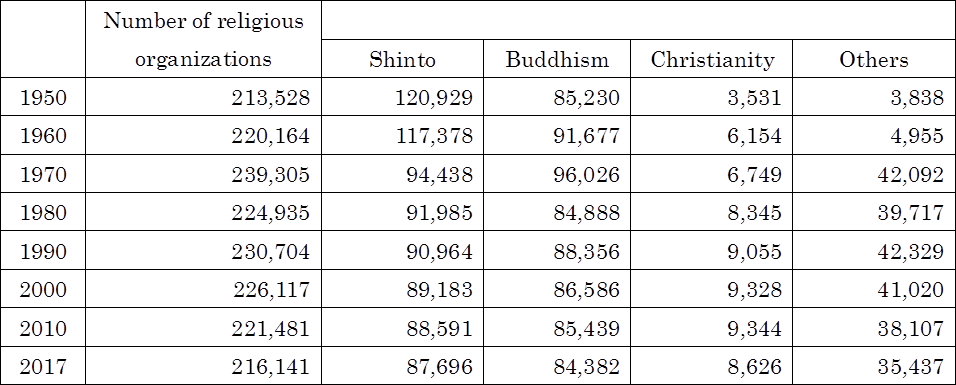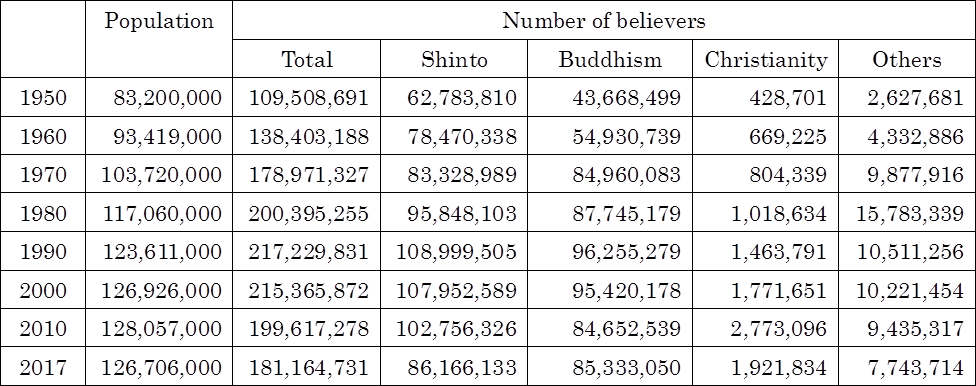Column Finance and the Social Security System 2019.02.18
【Aging, safety net and fiscal crisis in Japan】No.160: Religious corporations facing issues with declining populations
The Agency for Cultural Affairs releases a year-end religious statistics report. Religion in Japan can broadly be divided into four categories (i.e., Shinto, Buddhism, Christianity, and others). As shown in Table 1, there was no significant change in the number of religious organizations from 1950 to 2017 (i.e., from 213,528 to 216,141, respectively). However, a data comparison according to religious affiliation indicates that numbers for Shinto are decreasing while those for Christianity and other religious organizations are increasing.
As shown in Table 2, the total number of believers significantly exceeds the population. This is because many Shinto and Buddhist believers are counted twice. The management of religious organizations is supported by faith-based donations, funeral fees, wedding ceremonies, and ancestral services. Thus, it is expected that shrines and temples will have difficulty surviving in areas where depopulation is accelerating due to declining elderly populations.
Table 1: Number of religious organizations

Source: Agency for Cultural Affairs
Table 2: Number of believers

Source: Agency for Cultural Affairs
